实验1:


答题:
#include"sqlist.cpp"
void main()
{
SqList *L;
ElemType e;
InitList(L);
ListInsert(L,1,'a');
ListInsert(L,2,'b');
ListInsert(L,3,'c');
ListInsert(L,4,'d');
ListInsert(L,5,'e');
printf("顺序表为:");DispList(L);
printf("顺序表长度为:%d\n",ListLength(L));
ListEmpty(L);
if(ListEmpty(L))
printf("顺序表为空\n");
else
printf("顺序表为非空\n");
GetElem(L,3,e);
printf("顺序表的第3个元素为:%c\n",e);
printf("元素a的位置为:%d\n",LocateElem(L,'a'));
ListInsert(L,4,'f');
printf("插入第4个元素后顺序表为:");DispList(L);
ListDelete(L,3,e);
printf("删除第三个元素后顺序表为:");DispList(L);
DestroyList(L);
}
运行结果:
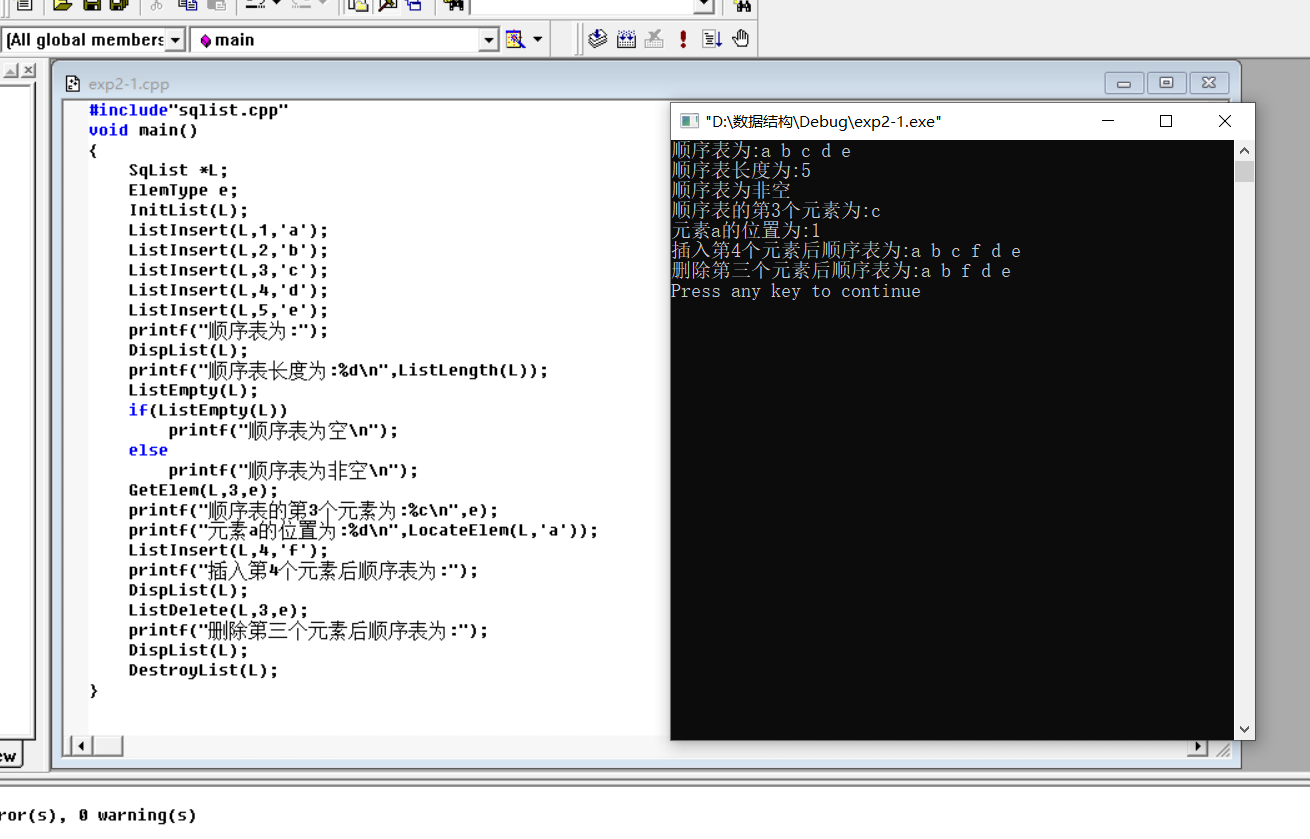
参考答案:
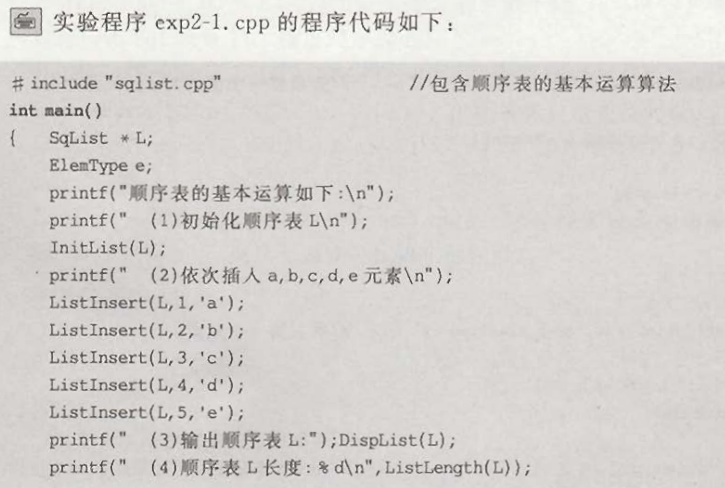
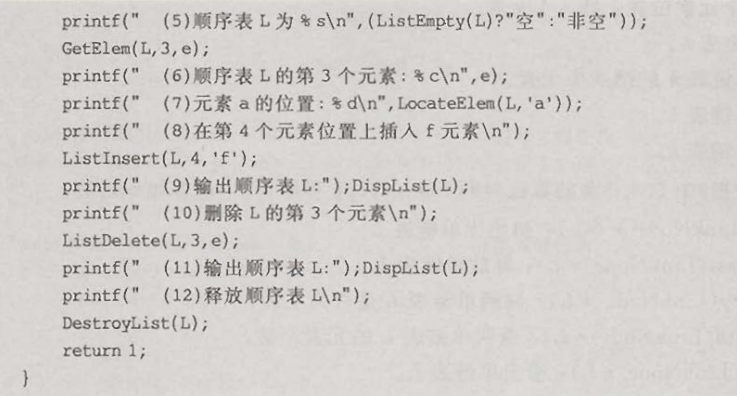

实验2:

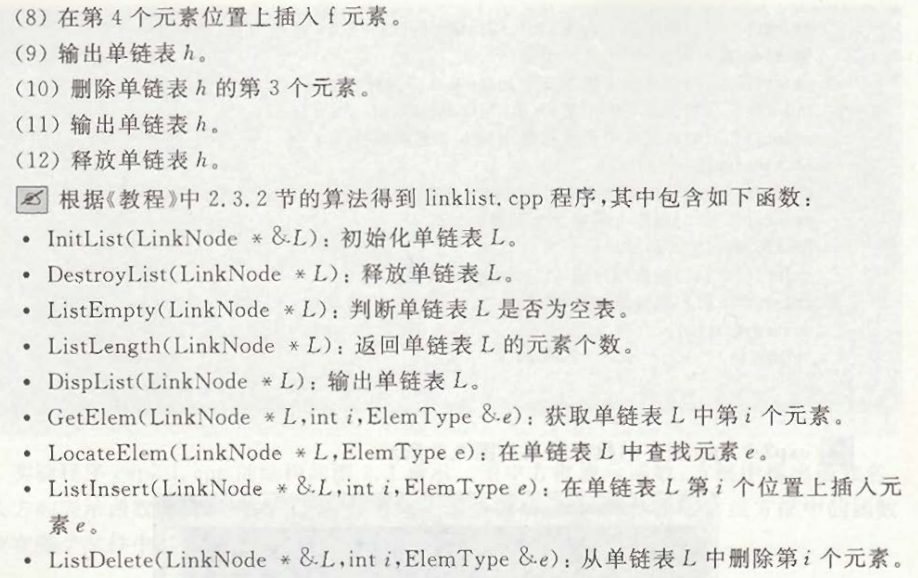
答题:
#include"linklist.cpp"
void main()
{
LinkNode *L;
ElemType e;
InitList(L);
ListInsert(L,1,'a');
ListInsert(L,2,'b');
ListInsert(L,3,'c');
ListInsert(L,4,'d');
ListInsert(L,5,'e');
printf("单链表为:");
DispList(L);
printf("单链表长度为:%d\n",ListLength(L));
ListEmpty(L);
if(ListEmpty(L))
printf("单链表为空\n");
else
printf("单链表为非空\n");
GetElem(L,3,e);
printf("单链表的第3个元素为:%c\n",e);
printf("元素a的位置为:%d\n",LocateElem(L,'a'));
ListInsert(L,4,'f');
printf("在第4个位置上插入f后单链表为:");
DispList(L);
ListDelete(L,3,e);
printf("删除第3个元素后单链表为:");
DispList(L);
DestroyList(L);
}
运行结果:

参考答案:
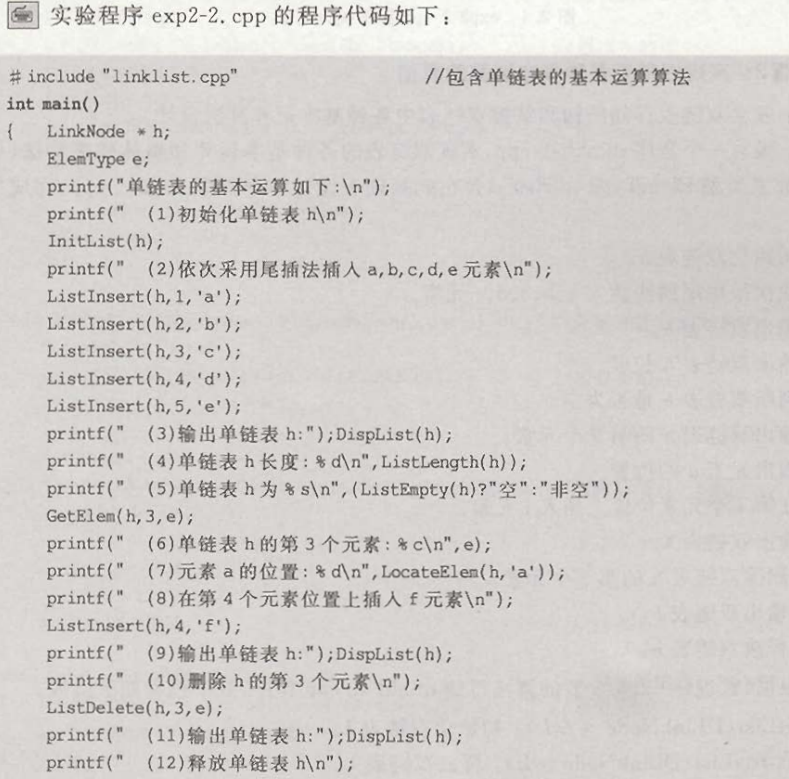
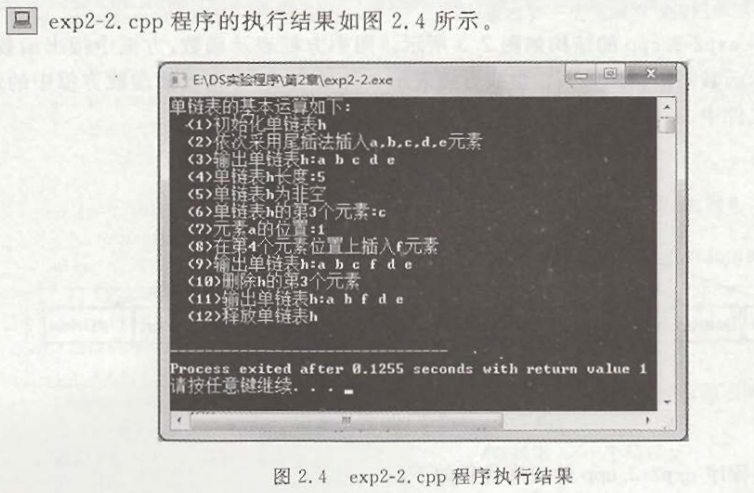

来源:https://www.cnblogs.com/nicaihui/p/12485542.html